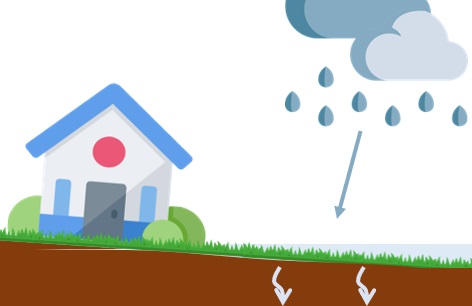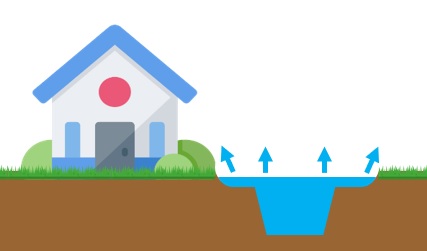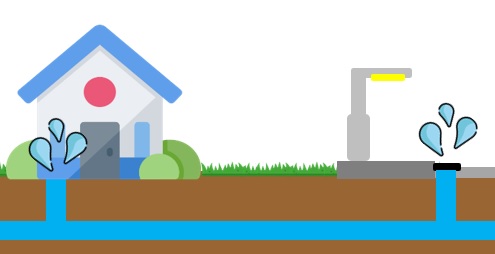There are a number of different types of flood risk. Any given location could be threatened by all, one or none of them and this can make it confusing. This page lists all the different types of flood risk, and gives an explanation of what they are.
It is important to remember that as the effects of climate change become reality, all of these types of flood risk could change in extreme and unpredictable ways.

Surface Water (Pluvial) Flooding
Surface water flooding is caused because the volume of water falling onto or over the ground overwhelms existing drainage systems and cannot soak into the ground. This type of flooding is usually short lived and is associated with heavy downpours of rain. Often there is limited advanced notice of this type of flooding and it can be very localised. However, weather forecasts from the Met Office can give good generalised indication of the possibility of flooding

River (Fluvial) Flooding
When excessive rainfall causes a river to exceed its capacity and burst its banks, the resulting flood is known as fluvial flooding. This might happen on small “ordinary” watercourses. Or it could happen to large, main rivers. Ordinary watercourses are regulated by Lead Local Flood Authorities, and in Suffolk this is Suffolk County Council or Internal Drainage Boards when they fall under IDB areas. Main rivers are regulated by the Environment Agency.

Groundwater Flooding
Normally water will soak down into the ground, but occasionally water will rise up out of the ground. This occurs when the water table in permeable rocks rises to ground level or above. Groundwater flooding is not necessarily linked to a specific rainfall event and is generally of longer duration than other causes of flooding. It can be very difficult to predict where groundwater flooding could cause issues.

Coastal (Tidal) Flooding
Suffolk is fortunate to have many miles of beautiful coastline but this can bring some associated risk. Tidal flooding is caused by a combination of high tides and surges, plus inclement weather causing the sea to overtop or breach sea defences and inundate the surrounding areas. As was seen during the infamous 1953 flood where a North Sea surge killed over 300 people in the UK and caused tens of millions of pounds worth of damage, tidal flooding can be incredibly severe under exceptional conditions. Therefore, similarly to fluvial flooding, understanding flood warnings and flood risk maps can be be very helpful for people living with tidal flood risk.

Sewer Flooding
Sewers are man-made drainage systems which are typically underground. They carry either “foul” water (effluent from toilets, showers, baths, kitchens etc) or “surface water” (rainwater). Sometimes older systems could carry both and these are know as “combined” sewers. If these sewers become blocked or overwhelmed they may cause flooding on the surface. Often, when drains in the road look like they are flooding in heavy rain it is not a blockage but the fact that the underground pipes cannot accept any more water. You can use Suffolk County Council’s flood reporting page to work help you identify which organisation to report sewer flooding to.

